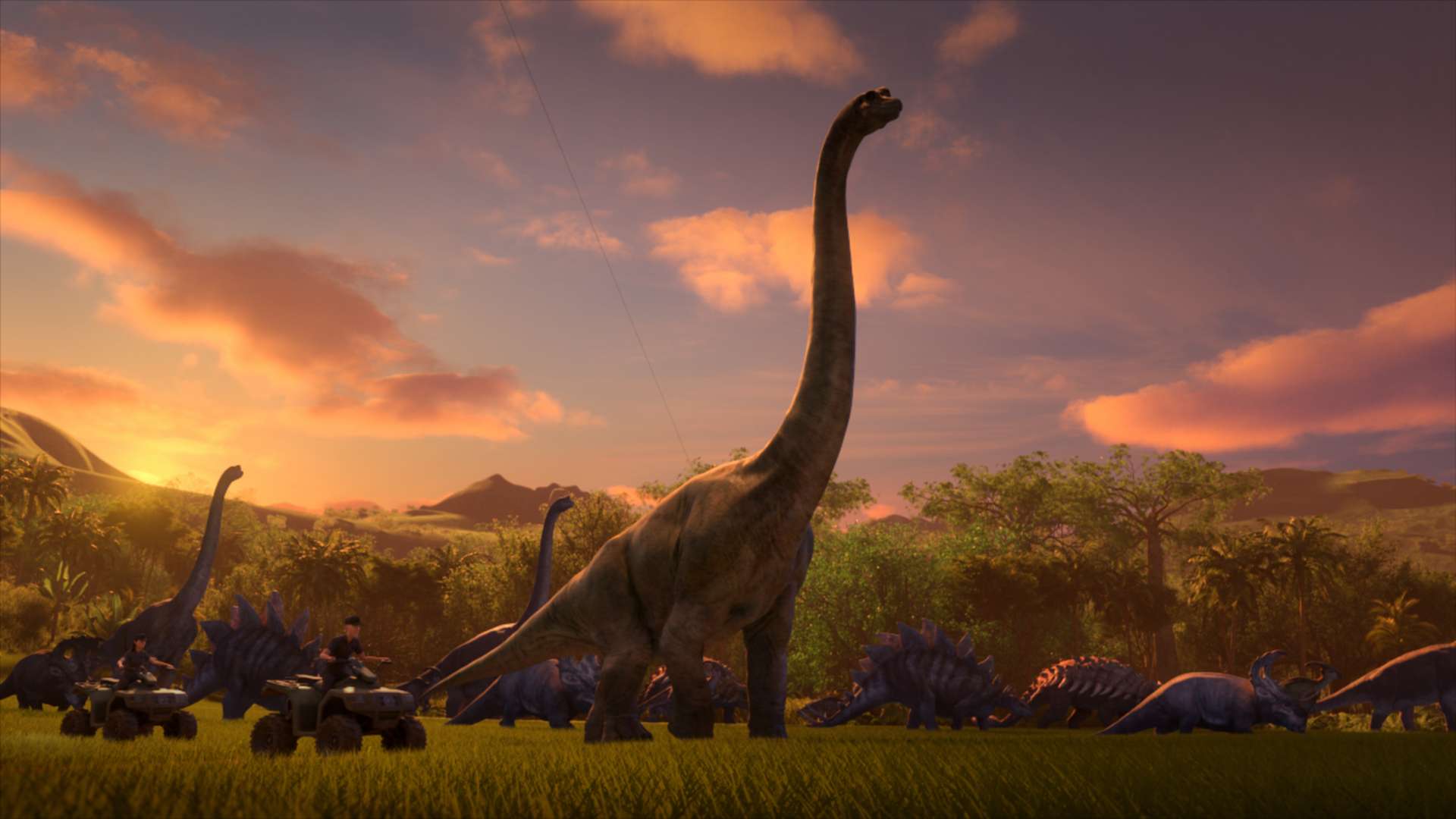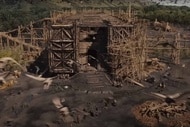Create a free profile to get unlimited access to exclusive videos, sweepstakes, and more!
Could you keep Jurassic Park dinosaurs alive in today's world? Science says...

Jurassic Park makes a big deal out of how it brought dinosaurs back to life after millions of years of extinction. However, while that bit of fantasy science is obviously incredible, it's only the first step in maintaining a dinosaur zoo.
The Jurassic Park franchise, including spin-offs like Netflix's new Jurassic World: Camp Cretaceous series, makes it clear that operating a dinosaur theme park is tricky, but keeping your revived dinosaurs from eating the guests isn't the only thing you've got to worry about. You've got to keep those prehistorical animals alive in modern times — and that would be harder than you might expect.
LIFE AFTER BIRTH
The first and most ambitious hurdle to returning living dinosaurs to Earth is, of course, reconstructing their DNA. At current, that’s a scientific impossibility. DNA just doesn’t last that long. The oldest DNA from a fossil record is about a million years old. That’s impressive, to be sure, but it’s a long way off from the 65 million years we’d have to traverse to get to even the most recent of Cretaceous dinosaurs. Not to mention the even larger historical distances we’d need to travel in order to find the Jurassic period dinos that lend the franchise its name.
Let’s assume, though, for the sake of argument, that we figure it out. Tucked away inside a lab on a remote island, scientists have quietly grown baby dinosaurs. Now the second and more longstanding problem begins: how to keep them alive and happy.
Surely, once we’ve gone out of our way to return a disappeared species to the face of the earth, we have some obligation to protect and care for those animals. Trouble is, doing so might be beyond our capabilities.
FINDING FOOD
This wouldn’t be as much of a concern for the carnivorous dinosaurs who are responsible for most of the action in the Jurassic Park films, as well as the recently released Camp Cretaceous. For the most part, meat is meat, and it’s likely the raptors, carnotaurus, T. rexes, and other predators would be perfectly happy chowing down on cows, sheep, or whatever we threw their way. The herbivores, however, would have a much harder time in their search for food.
The main issue is the drastic ways Earth's ecosystem has changed over the past 100 million years. Plant life in the Mesozoic era differed quite a bit from what’s available today. That isn’t to say that sauropods (we’ll use them as an example because of their large size and because they’re cool) wouldn’t be able to find something to eat in the modern world, but they’d have a harder time of it.
For one thing, the evidence suggests there was just more plant life to go around during the dinosaur age. Scientists believe the distant past was extra lush because of higher CO2 levels that allowed plants to trap more energy. It’s this abundance of vegetative food sources that is thought to be one of the primary causes for sauropods’ incredible size.
While it’s difficult to know precisely what sauropod diets were like, it’s believed they were fond of conifers, which aren’t endemic to the fictional Jurassic Park's location in Costa Rica or, presumably, its fictional outlying islands like Isla Nublar.
It’s true that there is plenty of vegetation to go around in Earth’s modern tropical regions, but what’s less clear is whether sauropods would recognize much of it as food. And considering the massive intake of nutrients needed to sustain an animal of that size, let alone an entire population, they might just starve to death, surrounded by food.
THIN AIR
A side effect of the mass proliferation of plant life around the globe was a marked increase in atmospheric oxygen. Some estimates indicate oxygen levels might have been upward of 35 percent of what they are now during parts of the Mesozoic.
All of that extra oxygen filled in the atmosphere to a point that the air was quite literally thicker than it is today. The higher oxygen levels and thicker atmosphere may have contributed to the gigantism of some species, particularly large flying insects that took advantage of the atmospheric conditions to grow larger than they could in the modern day.
Our current atmosphere has an average oxygen level of 21 percent, amounting to a dropoff of almost half since that high mark a few hundred million years ago. For comparison, it’s about the same difference as the amount of oxygen available at Everest base camp compared to the amount of oxygen in the air at sea level.
All of which is to say, your roaming theme park sauropods might be able to breathe today’s air, but it won’t be pleasant, and it might not be sustainable for long periods of time. The life of a modern-day dinosaur could be one of cramped quarters, even if it was allowed to roam freely over an entire island. Large dinosaurs would likely struggle to find food, and they would be consistently short of breath.
Bringing dinosaurs back tens or hundreds of millions of years after they died out would be exciting, enlightening, and awe-inspiring for us humans, but they’d arrive into a world unrecognizable to the one they left — a world in which they don’t belong. A world to which they are not adapted.
Crafting a park in which ancient animals could survive comfortably would involve recreating their environment as closely as possible, including the climate, plant life, and atmospheric conditions to which they are accustomed. It’s unclear whether we’ll ever be capable of bringing back our long-dead dinosaur predecessors, but to paraphrase Dr. Ian Malcolm, it’s pretty clear we probably shouldn’t. Not for our sake, but for theirs.














